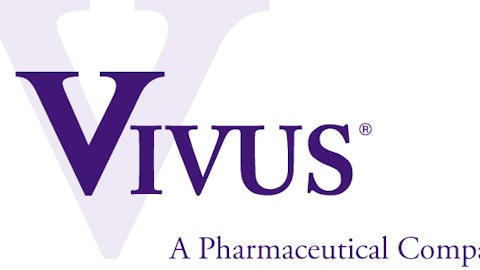It’s rare in the market when you can find a company that is doing clearly better than their competition. In many cases, investors have to settle for a company that does well in certain areas, but doesn’t match up as well in others. In the long run, you have to hope that the positives outweigh the negatives, and the company lives up to expectations.
However, there is one company I’ve identified that seems clearly ahead of its competition. I’ve called the company “One Of The Best Deals In The Market” before, and that still holds true. The company that is simply crushing its competition is CVS Caremark Corporation (NYSE:CVS).

If CVS were just a retail pharmacy it would be tough to make a case that this is a best in class investment. The company competes with the largest pharmacy network in Walgreen Company (NYSE:WAG), and also has to face down the number three pharmacy in Wal-Mart Stores, Inc. (NYSE:WMT). Since Walgreen has about 1,000 more locations, and Wal-Mart offers a significantly broader selection, this is a tough comparison. When you add in the fact that both companies also generate significant free cash flow, regularly raise their dividend, CVS better be on top of its game.
By the same token, if CVS were just a pharmacy benefit manager, it would be tough to call this company the best. The industry is dominated by (NASDAQ:ESRX), which filled about twice as many claims as CVS Caremark Corporation (NYSE:CVS) did last year. The company is expected to grow their earnings at a faster clip than CVS as well. The good news for CVS investors is, this company is neither just a pharmacy, nor just a pharmacy benefit manager, it’s both.
Not Just Marginally Better
Any time I look at a stock, I try to compare the company’s operating margin to their competition. In general, a higher operating margin either means the company is more efficient, or has pricing power. Investors who hope to hold a stock for a long time would do well to consider this metric. In CVS’ case, the operating margin has to be split between the two main divisions to do a real comparison.
On the pharmacy side, Walgreen might be the biggest company, but they actually have the lowest operating margin at 4.07%. Wal-Mart is the third largest pharmacy, but reported an operating margin of 5.37% in the current quarter. Admittedly Wal-Mart’s operating margin is comprised of much more than prescriptions. That being said, CVS has a commanding lead in this area, with a pharmacy operating margin of 9.7% in the current quarter. With an operating margin 80% better than Wal-Mart, and 138% better than Walgreen, you can see CVS is in a class of its own.
Looking at the pharmacy benefit division, we find much of the same results. Express Scripts processes about double the claims compared to CVS. However, CVS’ operating margin in this division was 5.6%, versus Express Scripts margin of 5.26%. This may not sound like much of a difference, but with half the claims, it’s impressive to see CVS Caremark Corporation (NYSE:CVS) take the lead without the benefit of scale that Express Scripts enjoys.
Show Me the Money!
Two of the most obvious ways that a company can reward investors is by buying back shares and paying dividends. In these two important areas, CVS has two clear advantages over their competition.
First, CVS is a share repurchasing machine. In the last year, CVS retired 4.66% of their diluted share count. By comparison, the only competitor that came close was Wal-Mart, with 2.28% of their shares retired. Since Walgreen and Express Scripts both had large acquisitions, the comparison isn’t even close. Walgreen’s share count increased 7.46% because of the Alliance Boots acquisition. Express Scripts’ merger with Medco caused their share count to balloon by more than 25%.
Second, CVS has a significantly lower free cash flow payout ratio relative to their competition. In this area, Express Scripts can’t compete because they stubbornly refuse to pay a dividend. Walgreen’s free cash flow payout is 66.67%, and Wal-Mart’s payout is 57.46%. By comparison, CVS’ free cash flow payout is just 21.72%. Though both Wal-Mart and Walgreen have higher yields at 2.29% and 2.67%, you can see that CVS’ lower payout ratio should allow the company to continue raising the dividend. Since CVS has been raising their dividend at a near 30% clip in the last few years, this lower yield (1.76%) won’t be an issue for long.
As you can see, by multiple measures CVS Caremark Corporation (NYSE:CVS) is just better than their competition. What’s amazing is even with all of these advantages, the stock continues to sell for a forward P/E ratio that almost matches the company’s projected growth rate. CVS is anticipating a strong year in 2013 with at least $4.8 billion in free cash flow. Since management is committed to rewarding shareholders through share buybacks and dividend increases, it may not be long before the market wakes up to this value.
The article 3 Ways This Company Is Better Than the Competition originally appeared on Fool.com.
Copyright © 1995 – 2013 The Motley Fool, LLC. All rights reserved. The Motley Fool has a disclosure policy.





